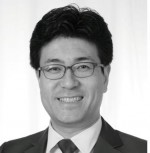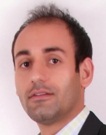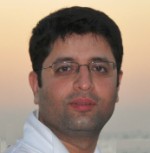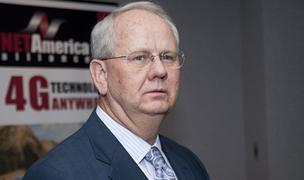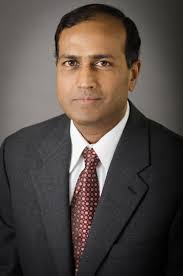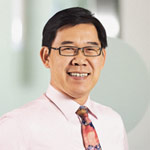
Seong-Mook Oh, President, Network Group, Korea Telecom
Seong-Mook Oh, President, Network Group, Korea Telecom, South Korea is delivering an opening keynote speech on Day Two of the LTE World Summit, taking place on the 24th-26th June 2013, at the Amsterdam RAI, Netherlands. Ahead of the show we get a comprehensive update on KT’s cutting-edge LTE deployment and why its CCC architecture brings it a competitive advantage.
What major developments have there been with regards to the LTE industry in your region this past year?
In the past year KT’s LTE network covered 99 per cent of the population in Korea. The traffic volume of our LTE networks has surpassed that of our 3G network, even though the only a quarter of KT’s subscribers are on LTE. This impressive deployment has been accomplished over the past year using the CCC (Cloud Communication Center) architecture, the most simple network deployment architecture, as far as I know. In the CCC architecture, all the RUs (Radio Unit) are connected to DU (Digital Unit) pools located in the centralisation center via through optic cores. The signals from multiple RUs are processed all together to optimise the radio performance and mitigate the inter-cell interference. To introduce more carriers in the near future, the optic cores and DU processing pools will be reused and RUs will be installed at a local cell site via the plug-in method. In addition, KT launched a VoLTE and PSVT (Packet Switched Video Telephony) service, which provides the HD-Voice and HD-Video service.
What are the chief technical challenges you are facing?
LTE is very sensitive to inter-cell interference due to the nature of OFDM-based systems. In a conventional architecture inter-cell interference control has limitations due to the delay and low speed between eNodeBs. KT’s CCC is a radical solution designed to resolve these inter-cell interference problems. However, the growing demand for higher data rates and the increase of LTE subscribers requires additional solutions such as carrier aggregation and femtocells. Through our close collaboration with several vendors we are trying to discover the optimal solutions. Our so-called “Connect & Development” method is focused on inter-eNodeB cooperation, which is the basis for carrier aggregation and HetNet technology.
The LTE World Summit, the premier 4G event for the telecoms industry, is taking place on the 24th-26th June 2013, at the Amsterdam RAI, Netherlands. Click here to download a brochure for the event.
What are the key techniques for network optimisation in LTE and what effect can it have on the customer experience?
Most of our customers’ dissatisfaction comes from cell-edge regions where the QoS is very low, due to the inter-cell interference, causing missed or dropped calls. In order to enhance cell-edge performance we have introduced new techniques named “JT (Joint Transmission)” and “CS (Coordinated Scheduling)”. These two technologies reduce inter-cell interference, but should be selectively used according to the network load. In the case of heavy traffic load, we should mainly focus on CS and in the case of low traffic, JT is beneficial as it improves throughput by increasing the signal strength. All these procedures come under the umbrella of SON (Self Optimized Network) technology.
Is VoLTE part of your plans and what benefits will it bring both to operators and consumers?
We have already commercialised VoLTE services. The “Idle to Active” time in 3G networks is about 2-3 seconds, and therefore the call set-up time for mobile-to-mobile is about 4-6 seconds. However, in LTE networks, the “Idle to Active” time is less than 100ms. Therefore, if you make a VoLTE call, the called party will respond within 1 second as well as it will make a connection to network within 100ms. In addition, the high voice quality of AMR-WB using 23kbps is very attractive to our customers. When using CSFB as an interim solution for voice service, PS calls also uses 3G networks during the voice calls causing user inconvenience due to the low 3G data speed. From the operator viewpoint, VoLTE will make it easy to reach an all-IP service, which will reduce the OPEX compared to conventional infrastructures.
Pricing for LTE is a controversial subject. Are operators getting it right?
ARPU of 3G smartphone users is $40. However, an ARPU of LTE user is about $50. That is, with LTE networks we can expect ARPU increase by 20 per cent. Recently, KT commercialised an LTE Unlimited price plan at $95 compared to the unlimited 3G data service tariffs that start from $54. However, there are many concerns regarding unlimited price plans on LTE. That policy was driven mainly by the competitive market situation in South Korea.
Do you think that LTE offers great opportunities for monetisation or does it present challenges?
One opportunity for LTE is its high-data rate and low latency, which guarantees QoS for streaming and interactive services. Content is easily accessible with LTE smartphones and “virtual goods” can be monetised and delivered via LTE networks. For example, we can provide a better or guaranteed QoS for users viewing adverts. New LTE-based services such as eMBMS and RCS also offer an opportunity for monetisation. KT is preparing for eMBMS pre-commercial services within this year. However, if operators lose the right to control QoS due to the regulation issues, operators will face some challenges for sustainable growth and should make an effort to develop a new ICT (Information Communication Technology) business model.
In order to offer a more competitive service than the OTT players KT is leveraging CCC for ICT business. CCC is a kind of domain-specific cloud technology, based on virtualisation. By unifying the platform for radio and several application services into CCC, we can provide cross-layer optimised services between applications and radio. For example, we can utilise user contexts such as user ID, traffic content, QoS, location, and the radio environment to provide the most suitable service to our customers. I expect that all these services will offer a great monetisation opportunity to mobile network operators.
Where do small cells fit into your plans?
Most of KT’s mobile network infrastructure already consists of small cells. This is because the small cell is key to meeting capacity demands and removes coverage holes in a cost effective way. With the advent of smartphones and the exponential growth of data traffic, CCC-based small cells for 3G and 4G have been playing a significant role. The inter-site distance of these small cells is no more than 100m in Seoul, whereas the coverage of macro cell in rural areas is around 1-2km.
As an in-building solution KT has developed business femtocells, targeting both data offloading for capacity and in-building coverage. The business femtocells have been deployed at public places such as cafe and markets for public subscribers. We are currently developing a home femtocell and will introduce some calling plans for private subscribers. Following mass deployment, we expect more than 10 per cent of traffic will be off-loaded to femtocells in the near future, compared to the current data off-load of less than one per cent. In addition, the business and home femtocells will co-operate with CCC to reduce the inter-cell interference.
What do you think will be the most exciting new development in LTE in 2013?
From the viewpoint of network development, KT plans to introduce inter-band carrier aggregation and expand the system bandwidth up to 20MHz from 10MHz. This will enable us to double the maximum date rate to compete with wired broadband and generate new business opportunities for all the mobile related industries such as M2M, streaming and cloud services.
This year, our evolved CCC network (LTE WARP Advanced) will support advanced CoMP technology. A DM-RS (Demodulation Reference Signal) based on JT (Joint Transmission) technology will expand the JT areas into the cell edge using the different PCIs (Physical Cell ID). Furthermore, CS (Coordinated Scheduling) will be expanded into the heterogeneous network with the component of CCC-based small cell solutions such as picocell and femtocell through an X2 interface.
From the viewpoint of service development, KT will introduce application and radio converged services provided in CCC. For example, accessed information is frequently kept in CCC that is physically and logically closer to the user side. By reducing the amount of traffic on EPC, WAN links, and overburdened Web servers, caching provides significant benefits to reduce TCO and service delays. I expect that more application services such as LBS based smart dialling and local community services will be accommodated in CCC in future.


 As you probably have noticed Apple, the company famous for making computers, among other things, did something remarkable yesterday. Yes, it killed off the ‘Classic’ iPod. You know the one with the click wheel and the 50 trillion songs on your pocket slogan. I know, I can hardly believe it either. This is a great shame of course, especially as I was thinking of upgrading my 2005 model as just last week my iTunes library exceeded its 60GB capacity for the first time meaning I can’t just hook it up and sync. Ah, cruel world.
As you probably have noticed Apple, the company famous for making computers, among other things, did something remarkable yesterday. Yes, it killed off the ‘Classic’ iPod. You know the one with the click wheel and the 50 trillion songs on your pocket slogan. I know, I can hardly believe it either. This is a great shame of course, especially as I was thinking of upgrading my 2005 model as just last week my iTunes library exceeded its 60GB capacity for the first time meaning I can’t just hook it up and sync. Ah, cruel world.



